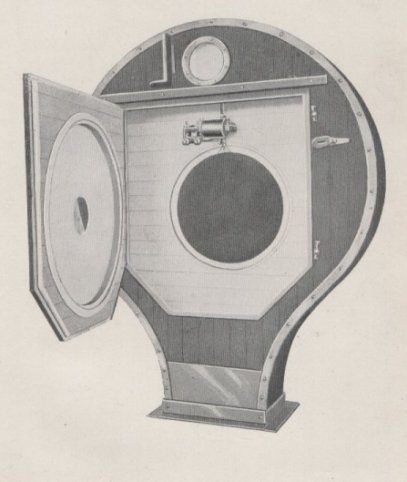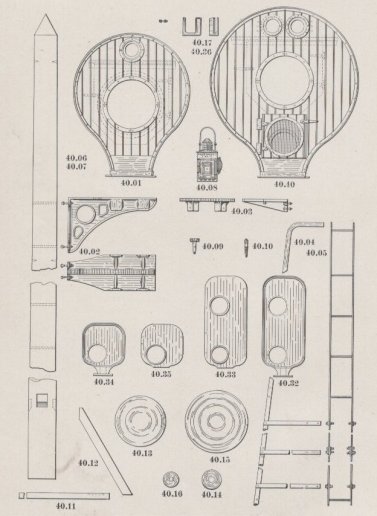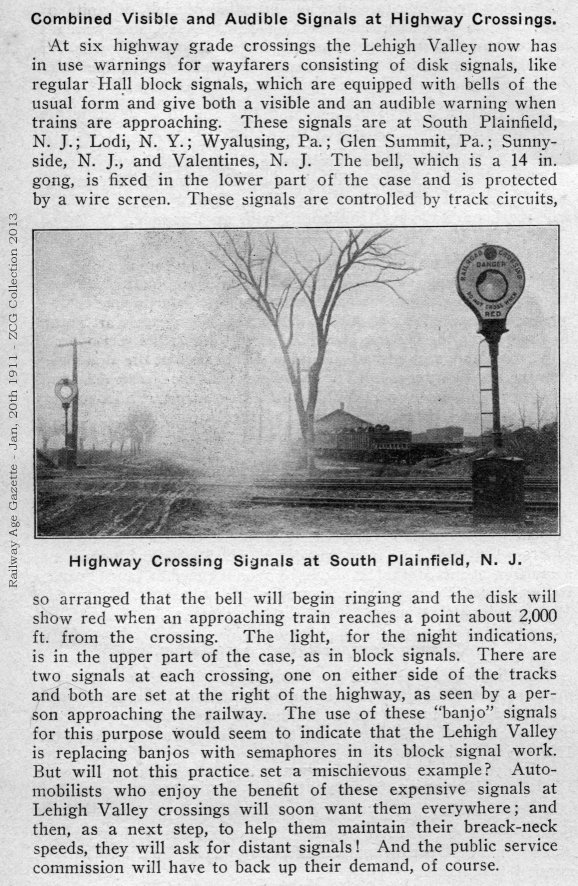
Left and Right: Both Images from a 1901 Hall Signal Company Catalog.

 |
In 1869 Thomas Hall patented a two aspect electric railroad signal, it was a wood signal with a round cloth disc inside. Commonly known as the "Banjo" signal these signals quickly became the signal to use. With the invention of the track circuit in 1872 the use of the Hall Disc signals grew. The disc signals where nothing more than a wood case with a large round glass window in the front and back of the signal, A cloth disc would drop in front of the window to show caution for daytime indicaton, the disc would rise and the window would become clear to show the daytime indication of clear. A smaller round window was located above the larger and provided a night time indicaton with the same princials, a glass disc would block the window and a oil burning lantern would be attached to the back of the disc signal. At night the lamp would light the smaller disc for the indications. Since the disc signals were only able to convey two aspects, the railroads would add another signal below the top one to add another indication and another aspect. Disc signals were one of the most common signals upto the 1910's when semaphores became popular, later searchlights brought the best if the period and semaphores and disc signals were replaced. Disc signals where known to be around well into the 1950's. Some railroads retired the disc signals from block signals and turned them in to crossing signals. Left and Right: Both Images from a 1901 Hall Signal Company Catalog. |
 |
